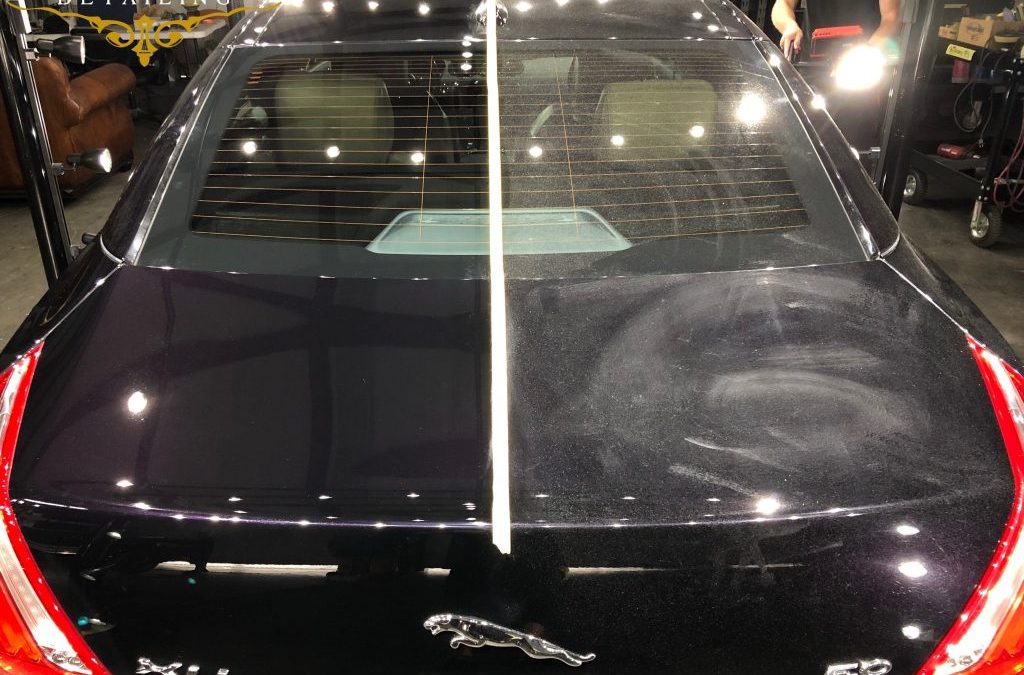If your vehicle has been hit by overspray—whether from nearby construction, industrial painting, or an errant spray gun—you know how frustrating it can be. That fine mist of paint can dull your finish, embed itself in clear coat, and leave unwanted texture on your panels. But with the right techniques and expertise, overspray can be safely removed without damaging your car’s paint. Here’s what you should know.
What Is Overspray — And Why Does It Matter?
Overspray is basically stray paint particles (or other coatings) that land on your vehicle’s surface unintentionally. It can come from nearby spray painting, building exteriors, or industrial sites. In auto detailing, overspray is a contaminant that sits atop the paint or in the clear coat. If left untreated, it can:
- Dull or haze the finish
- Cause micro-scratches during standard washing
- Trap dirt and accelerate wear
- Degrade resale value
Because overspray is not part of your original paint job, it acts like a foreign contaminant — it needs careful removal.
How Professionals Remove Overspray — The Step-by-Step Approach
Here’s a typical workflow a detailing shop, like ours, might follow when tackling an overspray job.
- Inspect & test a small area – Always start with a test spot. This allows the technician to choose the least aggressive method needed without risking the finish.
- Thorough wash first – Before attacking overspray, the car must be clean of surface dirt, grime, and wax. Otherwise, you risk rubbing contaminants into the paint.
- Use a clay bar or clay-like medium – One of the most common methods is claying, which helps pull embedded particles (including overspray) off the surface. Many detailers recommend clay for moderate overspray because it’s relatively safe when used with plenty of lubrication.
- Apply solvent or adhesive remover (if needed) – For more stubborn overspray, detailers may use a dedicated overspray remover or adhesive solvent. These softening agents help dissolve the paint particles so they can be wiped away. Always use them carefully and with proper safety (gloves, ventilation).
- Optional: wet sanding or polishing – In rare cases where overspray is deeply embedded, a very fine wet sanding step or light polishing might be required — but this is advanced and risky. It should only be done by highly skilled professionals to avoid damaging the clear coat.
- Finish with sealant or protective coating – After overspray removal, the paint is more vulnerable. Applying a high-quality wax, sealant, or ceramic coating helps re-protect the surface and restore gloss.
- Final inspection under varied lighting – Use bright lighting to inspect the panels for any residual specks or texture. Some overspray is very fine and only visible in certain light.
What You Can Do to Prevent Overspray Damage
- Cover your car if you know there’s painting work nearby (tarps, thick covers).
- Park indoors or in sheltered areas during major paint jobs on nearby structures.
- Use protective wraps or films when you know your car will be stationary near spray zones.
- Act quickly — the sooner you get overspray removed, the easier and safer it is.
When to Leave It to the Pros
While some light overspray can be handled DIY, more serious cases require professional tools, experience, and materials. At First Class Detailing, we:
- Use industry-grade clay, solvents, and polishing equipment
- Know how to judge the right aggressiveness for your paint
- Remove overspray without compromising your finish
- Have safe protocols and insurance coverage
If you are in the Tampa Bay area and your car is showing texture, haze, or paint flecks that won’t wash off, give us a call. Our shop is located in Palm Harbor, just north of Clearwater. Our overspray removal package gives your finish a fresh start and restores smoothness and shine. Contact us with any questions or to get a quote on overspray removal today!

